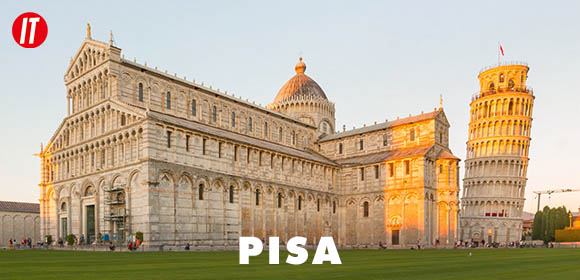
Pisa was once a port city and is located in the Tuscan region of Italy, where a leaning tower has made it famous throughout the world. The Piazza dei Miracoli lies in the north of the city, with its four historic landmarks dating from the 11th to 13th centuries, has become a monument to architectural history.
Piazza dei Miracoli
Located in the north of Pisa, Piazza dei Miracoli (Square of Miracles) takes its name from a novel by the Italian writer Gabriele d’Annunzio. On the velvety green lawns of the square are four ancient monuments: the Leaning Tower of Pisa, Pisa Cathedral, the Pisa Baptistry of St. John and the Camposanto Monumentale of Pisa (Monumental Cemetery). They are not only architectural monuments but also marvels of art history, and in 1987 the Piazza dei Miracoli complex was inscribed on the World Heritage List.

Leaning Tower Of Pisa
The Failed Architectural Wonder
The Leaning Tower of Pisa, built in 1173 as a bell tower attached to the Pisa Cathedral, is famous for its distinctive inclination and is considered a national landmark in Italy. The Leaning Tower of Pisa is 55 meters high and is decorated with columns and arches. Visitors can climb to the top and overlook the Piazza dei Miracoli.

Pisa Cathedral
Masterpiece of the Middle Ages
Pisa Cathedral was built in 1064 as the mother church of the Catholic Diocese of Pisa. The white marble walls and the loggia of the facade are in harmony with the Leaning Tower of Pisa and the Baptistery. The pulpit and altarpiece in the church are over seven hundred years old.

Pisa Baptistery Of St. John
Italy's Largest Baptistery
The Pisa Baptistery of St. John is located in front of the Pisa Cathedral and was built in 1152. It is the largest baptistery in Italy, at 55 meters high. The facade is decorated with arcades and Gothic spires, while the octagonal baptismal basin and the carved stone pulpit in the hall are important artistic treasures of the Baptistery.

Camposanto Monumentale Of Pisa
Frescoes from the 14th Century
The Camposanto Monumentale of Pisa was built in 1278 on the north side of the Pisa Cathedral. With its rectangular cloister, the cemetery is a museum of art with 2,600 square meters of frescoes, nearly 100 sarcophagi and tombstones, represented by the 14th-century fresco "The Triumph of Death".




























